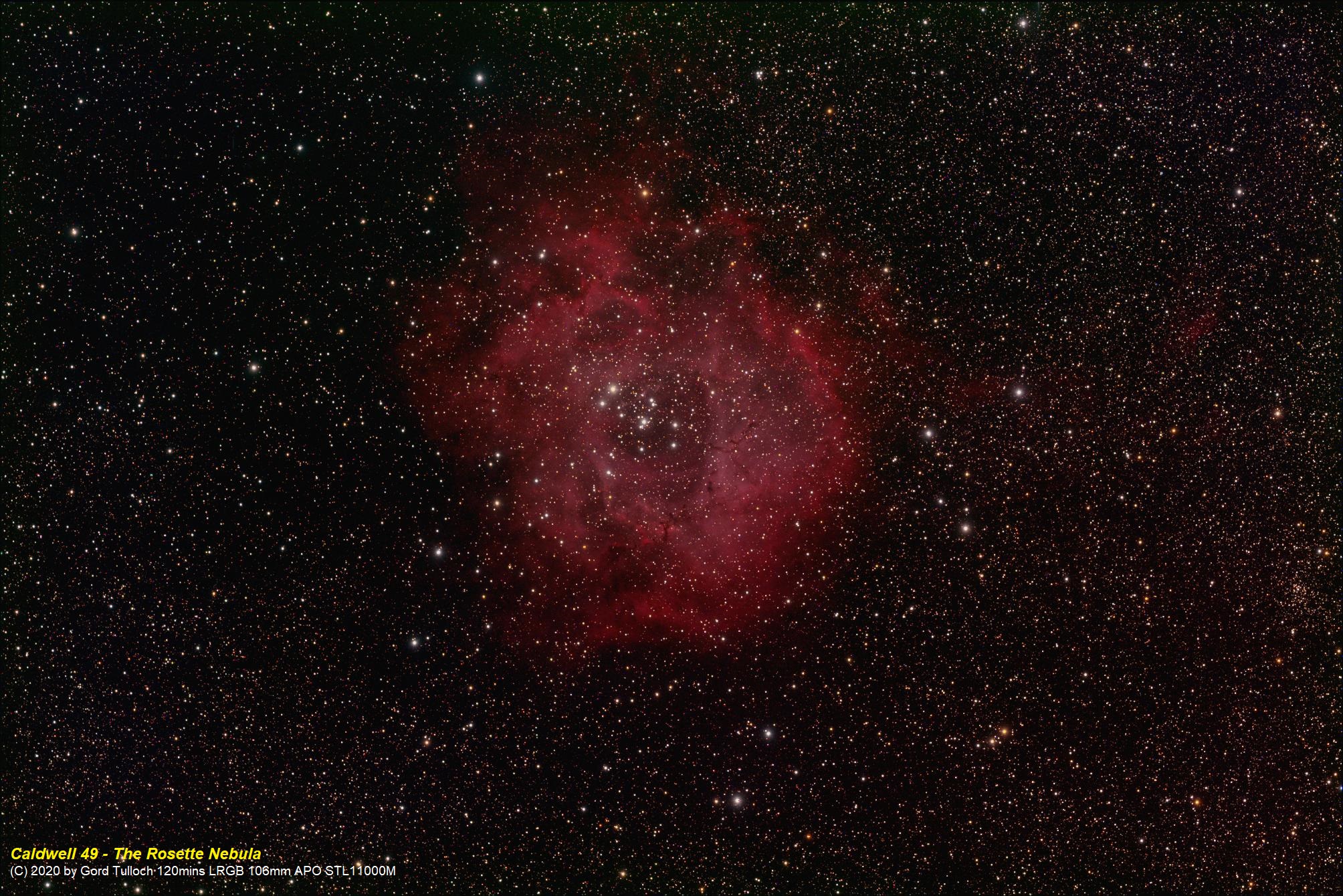The Rosette Nebula in Monoceros. Imaged on iTelescope T20, a 106mm Takahashi refractor with an SBIG STL-11000 camera by taking 6 300s exposures each in Luminence, Red, Green, Blue filters and stacking in Astropixelprocessor.
From Wikipedia:
The Rosette Nebula (also known as Caldwell 49) is an H II region located near one end of a giant molecular cloud in the Monoceros region of the Milky Way Galaxy. The open cluster NGC 2244 (Caldwell 50) is closely associated with the nebulosity, the stars of the cluster having been formed from the nebula’s matter.
The complex has the following New General Catalogue (NGC) designations:
NGC 2237 – Part of the nebulous region (Also used to denote whole nebula)
NGC 2238 – Part of the nebulous region
NGC 2239 – Part of the nebulous region (Discovered by John Herschel)
NGC 2244 – The open cluster within the nebula (Discovered by John Flamsteed in 1690)
NGC 2246 – Part of the nebulous regionThe cluster and nebula lie at a distance of 5,000 light-years from Earth) and measure roughly 130 light years in diameter. The radiation from the young stars excites the atoms in the nebula, causing them to emit radiation themselves producing the emission nebula we see. The mass of the nebula is estimated to be around 10,000 solar masses.
A survey of the nebula with the Chandra X-ray Observatory has revealed the presence of numerous new-born stars inside optical Rosette Nebula and studded within a dense molecular cloud. Altogether, approximately 2500 young stars lie in this star-forming complex, including the massive O-type stars HD 46223 and HD 46150, which are primarily responsible for blowing the ionized bubble. Most of the ongoing star-formation activity is occurring in the dense molecular cloud to the south east of the bubble.
A diffuse X-ray glow is also seen between the stars in the bubble, which has been attributed to a super-hot plasma with temperatures ranging from 1 to 10 million K. This is significantly hotter than the 10,000 K plasmas seen in HII regions, and is likely attributed to the shock-heated winds from the massive O-type stars.
